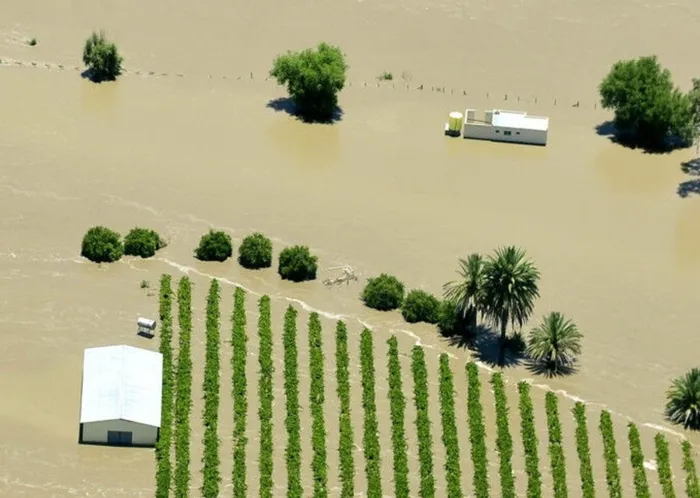Simultaneous occurrence of several catastrophic events will persist this year - Santam

File photo of floods in Upington in the Northern Cape. Picture: Bongiwe Mchunu/ Independent Newspapers.
Last year’s poly-crisis - a simultaneous occurrence of several catastrophic events- is likely to persist for a while, making the operating environment a tough place to be this year.
This is according to Thabiso Rulashe, the head of strategy and investor relations at Santam.
He told Business Report in an interview that 2024 would see multiple geopolitical, macroeconomic and climate-related trends continuing to create widespread uncertainty for the insurance industry.
Trade tensions, supply chain disruptions, the Europe/Middle East war, and regulatory and sustainability/climate-related pressure points would keep the world and the industry occupied.
“For insurers, mostly South African insurers will look to return to profitability, whilst dealing with the constrained economy. The obstacles to growth are persistent energy shortages, infrastructure decay, high crime and freight and logistics challenges.
“The onset of the El Niño weather pattern is creating additional uncertainty to the global economy and may have implications for agricultural production,” Rulashe said.
The El Niño phenomenon would not affect the world uniformly, creating risks for the global economy in both directions.
“For example, in South Africa, it may lead to drought, altering agricultural yields, increasing food prices and private spending. This weather phenomenon may minimise the negative impact of the floods experienced last year; however, it may impact our agriculture and property business through increased drought and fire-related claims,” he explained.
Santam, a general insurer, which boasts more than a fifth of the local market share, said with about 40 countries heading to polls in 2024, and representing 42% of global gross domestic product, the respective potential outcomes, were likely to escalate the geopolitical tensions.
“This may impact the business going into 2024. I think the return to profitability will remain a key focus area. However, the escalating frequency and severity of climate change and cybercrime are intensifying the focus on the insurance industry’s capacity and readiness to react; as a result, we think insurers will focus on transformational efforts geared towards risk prevention,” Rulashe said.
Rulashe said economic performance would remain a key issue for business.
Going into this year, insurance businesses should, despite tough economic challenges, improve risk management and underwriting practices, invest in data capabilities, enhance collaboration with stakeholders, invest in new business models of the future, embrace AI and scan for transformational M&A.
He said trends that would shape the short-term insurance industry in 2024, would be increased focus on delivering societal value and improving governance (Sustainability & Nature related transparency and disclosures), access to new customers by embracing new business models, for example, ecosystems, embedded insurance, deployment of generative AI and handling customer needs and preferences, and the resultant competition.
According to Statista’s statistics and facts published earlier this month, the African insurance industry was still developing in many countries across the continent.
The insurance industry in Africa represented less than 3% of insured catastrophe losses worldwide, although it’s home to almost 18%of the global population.
However, despite the low levels of insurance uptake, there continued to be increased interest and focus from major international brokers, insurers and re-insurers, it said.
“In 2020, the value of insurance premiums in Sub-Saharan Africa amounted to just over $50 billion (R946bn)” Statista said.
According to the data, South Africa had the largest and most established insurance market in Africa, accounting for a significant share of insurance premiums written on the African continent.
In 2021, life and non-life insurance penetration in South Africa reached just more than 12%, about 5% above the global average.
In 2022, health insurance was the most common type of insurance taken out by South Africans, and in a survey conducted in South Africa, around 30% of respondents stated that they felt well informed about their personal insurances.
BUSINESS REPORT